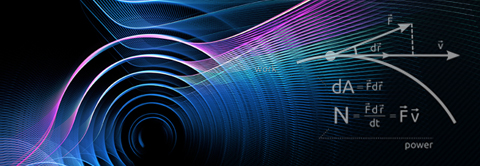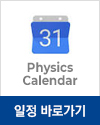High Magnetic Fields to Probe the sub-eV range of Particle/Astroparticle Physics - From the OSQAR experiments at CERN up to new perspectives at LNCMI-Grenoble
2015/10/16(Fri) 3PM, E6-2, (RM)#5318
Dr. Pierre Pugnat , CNRS-LNCMI
This seminar will be split in 2 parts. In the first one, the different set-ups, overall results and near future plans of the OSQAR experiments at CERN will be presented after a short reminder highlighting the scientific interests
of exploring the low, i.e. sub-eV, energy frontier of particle physics.
In the beginning, OSQAR mostly aimed at measuring the Vacuum Magnetic Birefringence (VMB), which was first predicted by Euler, Heisenberg and Weisskopf in 1936
and later formally confirmed by Quantum Electrodynamics.
First steps in the development of a high sensitive ellipsometer for OSQAR-VMB will be briefly presented together with results obtained in measuring the Cotton-Mouton effect
in Nitrogen gas as a function of pressure.
The second objective of OSQAR is to search for axions and Axion-Like Particles (ALPS) of sub-eV energy from a "Light Shining through a Wall(LWS)" experiment.
Similarly to the Primakov process of production of neutral mesons by high-energy photons in a strong electrical field, sub-eV ALPs can be produced from optical photons propagating in a strong magnetic field.
Owing to their strongly reduced interaction with standard model particles,axions and ALPs can cross an optical barrier beyond which they may be regenerated into detectable photons by the inverse Primakov process.
As dark matter candidates, interest in axions and ALPs goes beyond particle physics and intersects with cosmology. Last results from the OSQAR-LSW experiment will be presented.
They provide today the most stringent constraint on the di-photon coupling ever achieved in laser-based experiment[i].
The third objective of OSQAR is to look for the chameleon particle, from the search of a magnetic afterglow effect due to the possible coupling of chameleons to photons.
This particle, with an environmentdependent mass, was proposed as a quintessence candidate of dark energy.
An addendum to the OSQAR proposal has been issued beginning of 2015 to include the CHameleon Afterglow SearchExperimental scheme (CHASE) following the pioneering work of the GammeV collaboration.
OSQAR-CHASE has been approved by the CERN-SPSC scientific committee. It will be presented highlighting its potential to improve the present exclusion limits constraining chameleon particles[ii].
The second part of this seminar will be devoted to ongoing high-field magnet developments at the Grenoble High Magnetic Field Laboratory (LNCMI-Grenoble) of CNRS.
In particular, the large hybrid magnet user platform under construction[iii] will be presented highlighting its potential
for the development of new microwave LSW or/and ADMX type experiments based on the large bore superconducting magnet, which will produced 9 T in a 800 mm diameter.
This second part will provide the context for a possible promising collaboration between IBS-CAPP and CNRS-LNCMI and is expected to trigger fruitful discussions.
[i] R. Ballou, P. Pugnat, et al. (OSQAR collaboration), “New Exclusion Limits for the Search of Scalar and Pseudoscalar Axion-Like Particles fromLight Shining Through a Wall”, accepted for publication in Phys. Rev. D, http://arxiv.org/abs/1506.08082
[ii] http://cds.cern.ch/record/2001850/files/SPSC-P-331-ADD-1.pdf
[iii] P. Pugnat, et al., “Progress Report on the 43 T Hybrid Magnet of the LNCMI-Grenoble”, IEEE Trans. on Appl. Supercond. 24, 4301305 (2014)
Contact: CAPP Administraion Office(350-8166)







